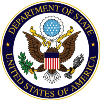State Department’s Diplomatic Security Service turns 100
By: Special Agent Bill A. Miller, Director of the Diplomatic Security Service and Principal Deputy Assistant Secretary for Diplomatic Security.
This year, the U.S. Department of State marks the 100th anniversary of the Diplomatic Security Service (DSS).
By understanding our past, we are better equipped to build our future. If the past is any guide, DSS will need to evolve continuously over the next hundred years to accomplish our core mission — to provide a secure environment for the conduct of our nation’s foreign policy.
Our organization began in April 1916 as a small group of federal agents, overseen by a Foreign Service Officer, who responded to espionage and fraud threats prior to the U.S. decision to enter World War I. Today, DSS includes more than 2,000 Special Agents, 200 Security Engineering Officers, and 100 Diplomatic Couriers. The DSS family also includes more than 150 Security Technical Specialists, 90 Criminal Investigators, 2,000 Marine Security Guards, 120 Navy Seabees, 1,050 Uniformed Protection Officers and Guards, 34,000 Foreign Guard and surveillance detection personnel, and 850 Civil Servants. Alongside interagency and international partners, Diplomatic Security personnel serve in 31 Field and Resident Offices in the United States, and in 275 U.S. diplomatic missions in more than 160 foreign countries.
Below are some highlights from our history:
- 1915 — President Woodrow Wilson details U.S. Secret Service agents to the State Department to investigate passport fraud and espionage cases that threaten U.S. neutrality in World War I.
- 1916 –U.S. Secretary of State Robert Lansing creates the first security office, the Secret Intelligence Bureau, overseen by a diplomat and staffed by investigators detailed from the U.S. Secret Service and U.S. Post Office Department.
- 1917 — Former Secret Service Agent Joseph “Bill” Nye becomes the Department’s first Chief Special Agent. His duties included escorting foreign dignitaries and investigating passport and visa fraud. With the United States’ entry into World War I, Marines and soldiers act as diplomatic couriers.
- 1918 — Civilians replace military couriers on diplomatic courier routes following the 1918 Armistice.
- 1920 — Robert C. Bannerman begins a 20-year term as Chief Special Agent. Amid ongoing budget challenges, Bannerman sets up numerous longstanding diplomatic security processes, especially passport investigations and, in the 1930s, counter-espionage.
- 1941–1945 — World War II revolutionizes diplomatic security as the United States assumes a global role.
- 1946 — With the rise in air transport, the Diplomatic Courier Service replaces the century-old dispatch agent system as the primary means of delivering diplomatic correspondence.
- 1947 — The escalating Cold War increases background investigations for State Department employees. Security officers are assigned to U.S. embassies.
- 1948 — The Department creates the Division of Security, soon expanded to the Office of Security. The Marine Security Guard Program is created.
1952 — After a yearlong search, security officers uncover a listening “bug” inside the Great Seal of the United States in the U.S. ambassador’s residence in Moscow, leading to a heightened Cold War counter-espionage posture for the Office of Security and a six-fold increase in the number of technical security officers. Over the next decade the Office of Security uncovers more than 100 listening devices in U.S. Embassies behind the Iron Curtain.
- 1965 — The State Department’s U.S. Navy Seabee program begins, helping to detect surveillance devices inside embassies and taking part in sensitive overseas construction projects.
- 1983 — Following the bombings of the U.S. Embassy and U.S. Marine headquarters in Beirut, Lebanon, the State Department convenes a diplomatic security review panel led by retired U.S. Navy Admiral Bobby Inman. The Antiterrorism Assistance program is launched to train foreign civilian security and law-enforcement personnel.
- 1985 — Based on the Inman Panel’s recommendations, Congress and U.S. Secretary of State George P. Shultz authorize resources to create the Bureau of Diplomatic Security (DS) and the Diplomatic Security Service (DSS).
- 1986 — President Ronald Reagan signs the Omnibus Diplomatic Security and Antiterrorism Act of 1986, providing DS with a formal structure.
- 1998 — Following U.S. Embassy bombings in Nairobi, Kenya, and Dar es Salaam, Tanzania, DSS staffing is increased by 25 percent, Congress approves $1.4 billion to build more secure embassies, and Regional Security Officers are granted more authority and responsibility, reporting directly to Chiefs of Mission.
- 2001 — Expeditionary diplomacy after the 9/11 al-Qa’ida attacks requires DS to protect American diplomacy in increasingly challenging environments. Since 2002, more than 90 U.S. and foreign security and law enforcement professionals have lost their lives protecting U.S. diplomats.
- 2003 — The DS Rewards for Justice Program pays out the program’s largest reward at the time for information that led to the location of Saddam Hussein’s sons, Uday and Qusay.
- 2012–2015 — Recommendations by the Accountability Review Board for Benghazi, convened after the attack on U.S. compounds in Libya, lead to the creation of the DSS High-Threat Programs Directorate — as well as recruiting more special agents, adding 1,000 Marine Security Guards, and strengthening an ever-closer security partnership with the U.S. military.
If you would like to know more, follow us online as we plan to continue releasing information about our history and traditions in the months ahead. Finally, I invite you to visit the digital DS Memorial, recognizing those who lost their lives in the line of duty while in service to Diplomatic Security.
Our centennial provides a unique opportunity to recognize the efforts of these courageous individuals, who over the last 100 years, have helped to keep our diplomats safe and protect American interest abroad. We look forward to continuing this time-honored tradition for years to come.
This entry also appears on DipNote, the State Department’s Official Blog.
